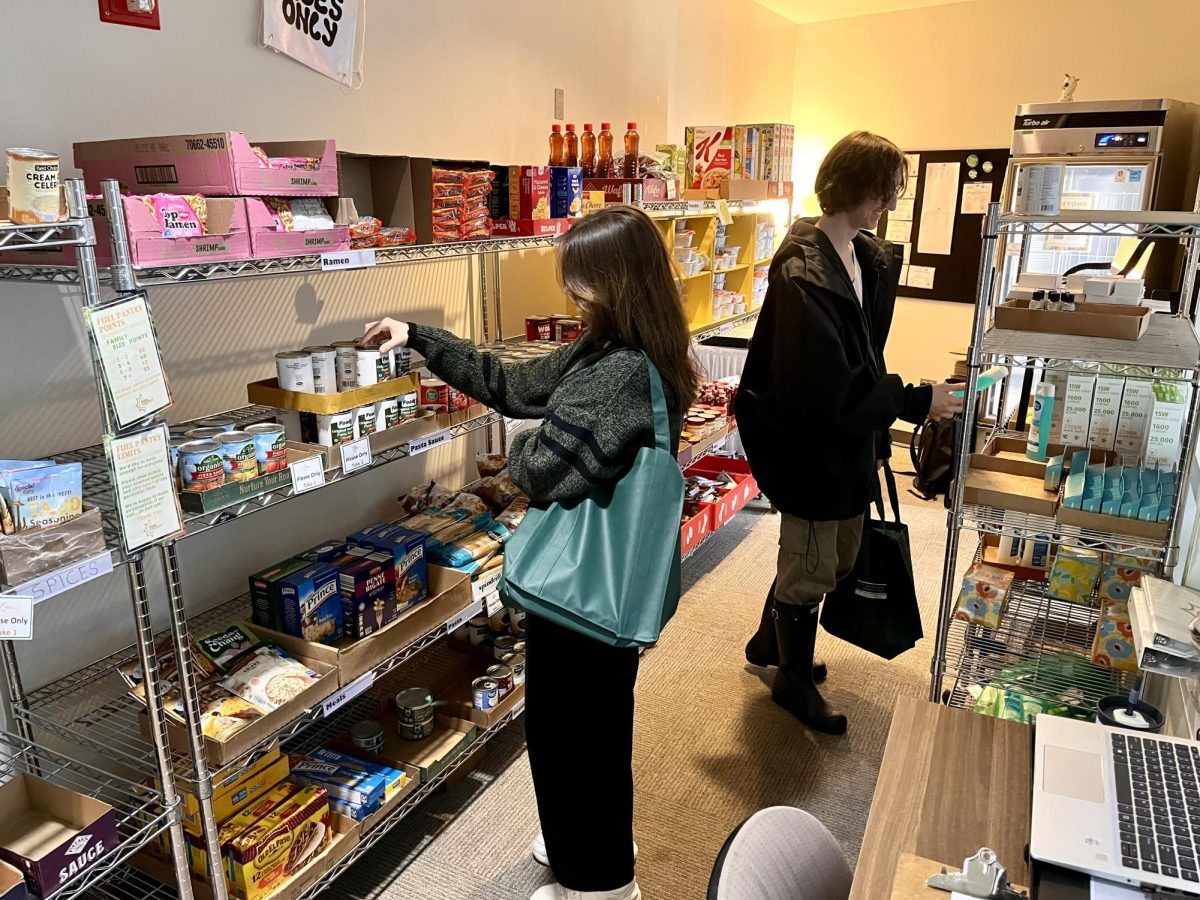In a world increasingly dominated by digital communications, the ability to discern real information from misinformation is more crucial than ever. Recognizing this, College of DuPage (COD) journalism student, Rrita Mulaj, organized a seminar last Monday to explain the problem of misinformation and provide students with the tools to navigate today’s complex landscape.
Mulaj’s seminar was part of her work for the Community College Initiative (CCI). The CCI program invites students from other countries to study at COD for an academic year. The international students attend classes, work on internships and complete other projects in their particular area of focus.
“One of our pillars is to complete a project that would help our community,” Mulaj explained. “I chose to bring two professionals together in a seminar that would affect the college students in the field of media.”
Hosted at the COD library, the seminar featured insights from communications professor Joe Goldberg and COD reference librarian Jason Ertz, each offering their unique perspective on the challenges posed by misinformation and the growth of technology.
Goldberg opened the seminar with a game for the students in attendance. A photo from a news story was shown on screen, with the supposed text describing the image. It was the students’ job to determine if the photo and text were real or fabricated.
The results? The students struggled to discern whether the text, the image or both were fake for most of the examples. While the game was a fun activity for the students in attendance, it highlighted the increasing difficulty of recognizing deep fakes and misinformation as today’s technology continues to evolve.
Goldberg then moved into discussing the importance of identifying misinformation, particularly for college students. As we enter into an era where students have a surplus of information at their fingertips, Goldberg stressed “everyone must be able to distinguish types and qualities of information sources, and how they are created.”
Few people are more credentialed to speak on misinformation than Goldberg. As a CIA covert action officer and international political consultant, Goldberg has witnessed misinformation’s impact on countries and their people firsthand. This means he understands the need for students to learn how to decipher misinformation when they encounter it.
“During campaigns, you use negative advertising,” Goldberg said. “That is pure misinformation, although the content might be true. Context and how it is presented make the difference.”
Goldberg wrapped up his portion of the seminar by showing instances in the media where deep fake technologies were used to create altered photos of public figures, which caused confusion and helped spread false narratives.
A specific example showed a side-by-side comparison of a real photo and a doctored photo. The real photo displayed a protester holding a sign reading “Give me liberty or give me death,” while the doctored photo showed the same protester’s sign displaying a wild conspiracy theory. The side-by-side comparison demonstrated the ease in which photos can be altered to push untrue narratives and malice.
Following Goldberg, Ertz took the stage to delve deeper into the technological aspects driving misinformation.
Possessing a master’s degree of education in learning design and leadership from the University of Illinois and over 16 years as a librarian at COD, Ertz has taught countless students how to navigate and vet online sources for factuality. However, recent advancements in technology, specifically AI, mean his job is increasingly vital but also difficult.
The beginning of Ertz’s discussion focused on the algorithms behind internet searches and social media feeds, which play a significant role in shaping the information landscape. He explained how these algorithms create echo chambers that reinforce our existing beliefs and, consequently, our susceptibility to misinformation.
Ertz also explained technology’s exploitation of our human nature, specifically how current advertising techniques prey on our emotions and attention spans.
“Technologies love our emotions, and they will play with them [emotions], and with our attention,” Ertz detailed. “I can sell cosmetics or sneakers, but I can also sell hate and insurgency with the advertising methods that exist within social media.”
Continuing his presentation, Ertz moved into explaining the intricacies of generative AI, and how these tools can create disinformation very easily. He noted generative AI’s tendencies to hallucinate, which has led to a number of studies being conducted as a result of this alarming trait of AI. Ertz, however, along with many others, believes the term “hallucination” to be a misrepresentation of what is really occurring.
“That’s [hallucinations] not really what’s happening. It [generative AIs] is not hallucinating; it’s lying to you,” Ertz declared. “That is the answer; let’s stop dancing around it.”
Ertz also recognized AI as a new form of censorship, as it possesses the capability to easily manipulate social narratives by distributing disinformation content across social media platforms. This capability, he warned, represents a significant challenge to public discourse and democracy.
While both speakers stressed the various dangers of misinformation in today’s digital age, the overarching message focused on students’ roles in recognizing and combating misinformation.
Ertz explained the SIFT approach, a method he teaches to students frequently throughout the year—Stop, Investigate the source, Find better coverage, and Trace claims, quotes and media to the original context. He detailed how this method helps individuals critically assess and navigate the overwhelming sea of information encountered online.
Goldberg echoed “Joe’s number one rule,” which states that everything is biased. Any current or former student can recall Goldberg’s rule, partially because of how often he recites it, but largely because of the truth the statement holds.
Goldberg also reminded the audience that understanding our biases and emotional responses is key to overcoming the manipulative nature of disinformation.
“It’s about emotion; this whole topic is emotion,” Goldberg highlighted. “There’s other things behind it, but we’re humans. That’s who the target is, and we’re emotional beings,”
Before the end seminar’s end, Goldberg tasked the students in attendance with a job to spread the message learned at the misinformation seminar:
“The victory in this seminar is if you go out and tell someone to watch their bias, that is the cure for misinformation,” Goldberg announced. “Understand how you’re impacted by info, and how you handle it.”









